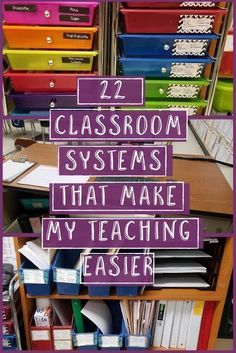Education is a dynamic field that requires creativity, adaptability, and a constant influx of new ideas. Teachers are always on the lookout for innovative teaching resources and ideas that can help spice up their lesson plans and engage students. Here’s an overview of various teaching ideas and resources that educators can incorporate into their classrooms.
1.Collaborative Learning Platforms:
– Tools like Google Classroom, Edmodo, and Trello can promote collaboration among students.
– These platforms allow for the sharing of resources, assignments, and feedback in a centralized location.
2.Interactive Whiteboards:
– Smartboards or interactive whiteboards are an excellent way to involve students actively in lessons.
– Teachers can use these tools for presentations, interactive quizzes, or group activities.
3.Gamification:
– Implementing game elements like point scoring, competitions, or challenges can make learning more exciting.
– Websites like Kahoot!, Quizizz, or educational versions of Minecraft can be integrated into lessons.
4.Project-Based Learning:
– Teachers can design projects that relate to real-world problems or scenarios, prompting students to apply what they have learned.
– This approach enhances critical thinking and problem-solving skills.
5.Virtual Field Trips:
– When physical field trips aren’t possible, virtual trips to museums, historical sites, or even outer space offer immersive learning experiences.
– Resources like Google Arts & Culture provide free access to high-quality virtual tours.
6.Video Resources:
– Short educational videos from platforms such as TED-Ed or Khan Academy can introduce topics or provide in-depth explanations.
– Videos are excellent for accommodating different learning styles.
7.Augmented Reality (AR) Applications:
– AR apps such as Quiver or Elements 4D bring static content to life by overlaying digital information onto the real world.
8.Flipped Classroom Model:
– By assigning lecture material as homework through video lectures or readings, class time is freed up for discussion and hands-on activities.
9.Social Media-Inspired Projects:
– Using platforms like Instagram or Twitter for class projects can make assignments more relatable and engaging for students.
10.Open Educational Resources (OER):
– Websites like OER Commons offer free teaching resources that are openly licensed for educators to use and adapt.
11.Mind Mapping Tools:
– Digital tools like MindMeister enable students to organize their thoughts visually, which is helpful for planning essays or understanding complex subjects.
12 Collaborative Storytelling:
– Group storytelling exercises using tools like Storybird promote creativity while improving writing skills.
In conclusion, the key to keeping education fresh and engaging is variety. By incorporating these teaching ideas and resources into the classroom environment, educators can create an inspiring space where students are excited to learn and explore new possibilities. The above innovations reflect just a fraction of the resources available today; they’re starting points from which educators everywhere can begin to expand their pedagogical toolkit.





